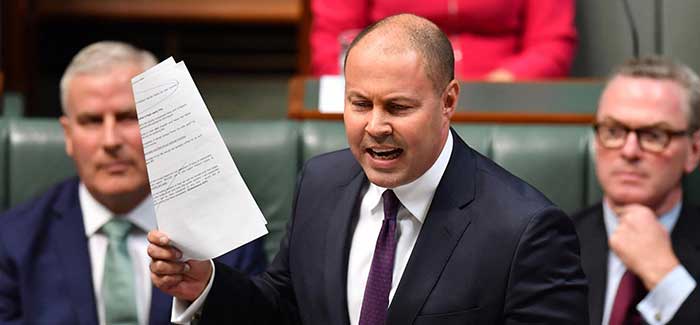The COVID-19 restrictions are bleeding 4 billion dollars per week from the Australian economy
If you ever wondered how enormous the financial impact of coronavirus on Australia is, here it is – the restrictions on business, trade, transport, tourism, and pretty much everything else is causing huge drains from the economy. The drainage is 12 times worse as compared to the recession that came in 1990.
The Stats
The Australian economy is suffering losses of 4 billion dollars per week. At this rate, the virus restrictions will end up wiping a whopping 50 billion dollars from the economy by June.
Josh Frydenberg’s views on the matter
On Tuesday, Treasurer Josh Frydenberg used a National Press Club address to press the issue of getting people back to work as soon as possible.
Josh believes that getting people back to work will be a tremendous saving grace for the economy. He has stated that few hardest-hit sectors like hospitality and retail also happen to be among the top employers in Australia, employing a total of over two million people.
It has been predicted that if restrictions had increased in Australia similar to how they grew in parts of Europe, the negative implications of the Australian GDP would have touched 120 billion dollars, with the main contributors being:
- Increased balance sheet impairments
- Skyrocketing unemployment rates
- Widespread firm closures
- Household debts

The GDP will fall sharply in the June quarter
Because of social distancing-related restrictions, countrywide shutdowns, and 320 billion dollars spent on rescue measures by the federal government, it is estimated that the Australian GDP will fall by about 10-12 per cent in June.
Consumption is dropping
Mr Frydenberg also stated that despite the record surge in panic buying because of the coronavirus outbreak, overall consumption has fallen by around 19.5 per cent as compared to January (this is based on NAB data).
When it comes to NSW, the drop seems to be around 20.4 per cent as compared to the start of the year.

Mr Frydenberg reminded the public that the recession that came in the 1990s resulted in a 5% jump in unemployment. It took seven years for these numbers to reach their pre-crisis’ levels. He added that unemployment had gone up the elevator and down the stairs. He stressed the importance of specific sectors opening and employment rates going up again.
He also stated that the efforts made by the Australian government to contain the COVID-19 pandemic have been reasonable, even calling early and active actions against coronavirus an advantage. Praising the adaptability of domains like mining, agriculture, and construction, he stated that these would help Australia a lot in its economic recovery.
What happens next for the Australian unemployment rates and the economy’s bottom line are yet to be seen. However, one thing is sure—Australia has been able to prevent the scenario from getting much worse. With over 320 billion dollars spent on rescue efforts and new initiatives being taken every day to ensure people can go back to work soon, Australia might be able to prevent the economic drainage from being irreversible.







